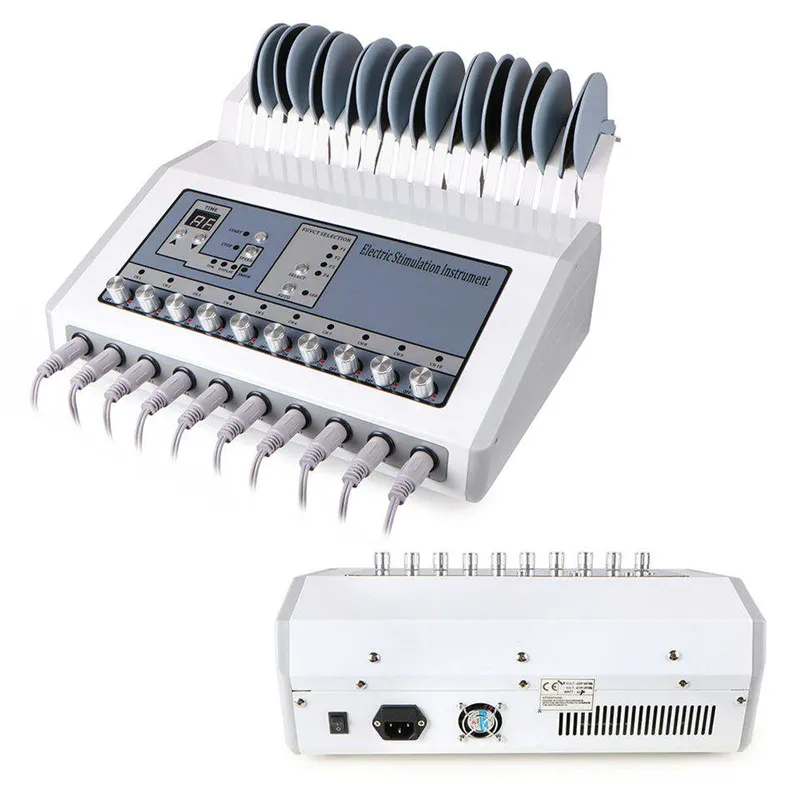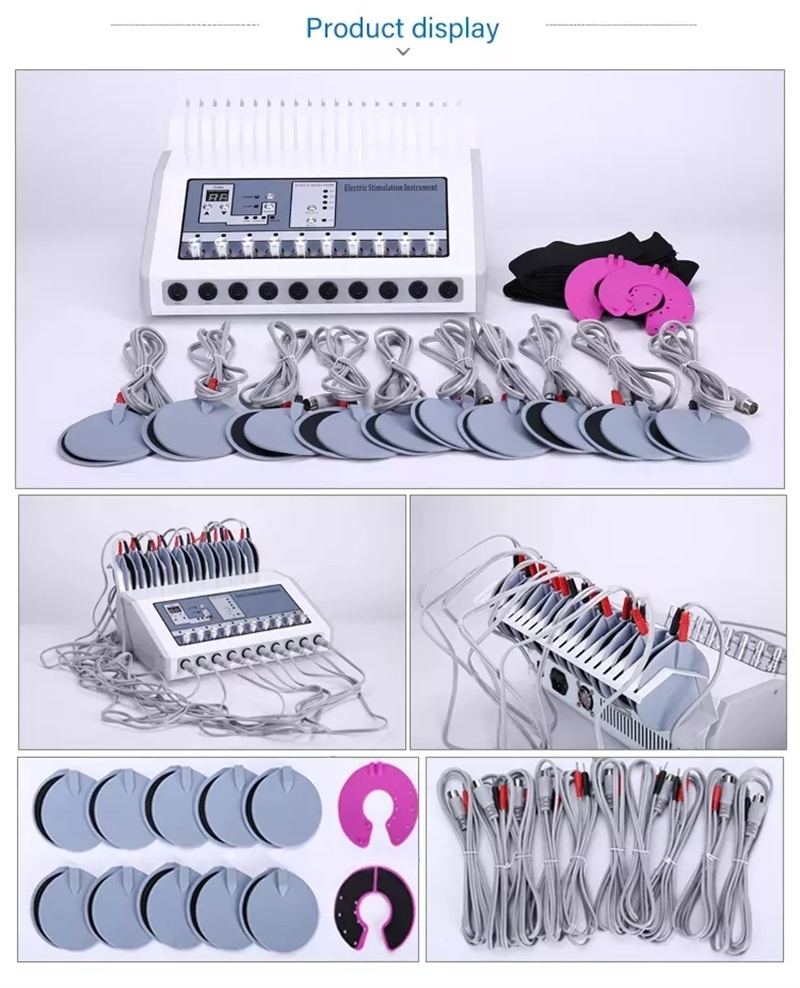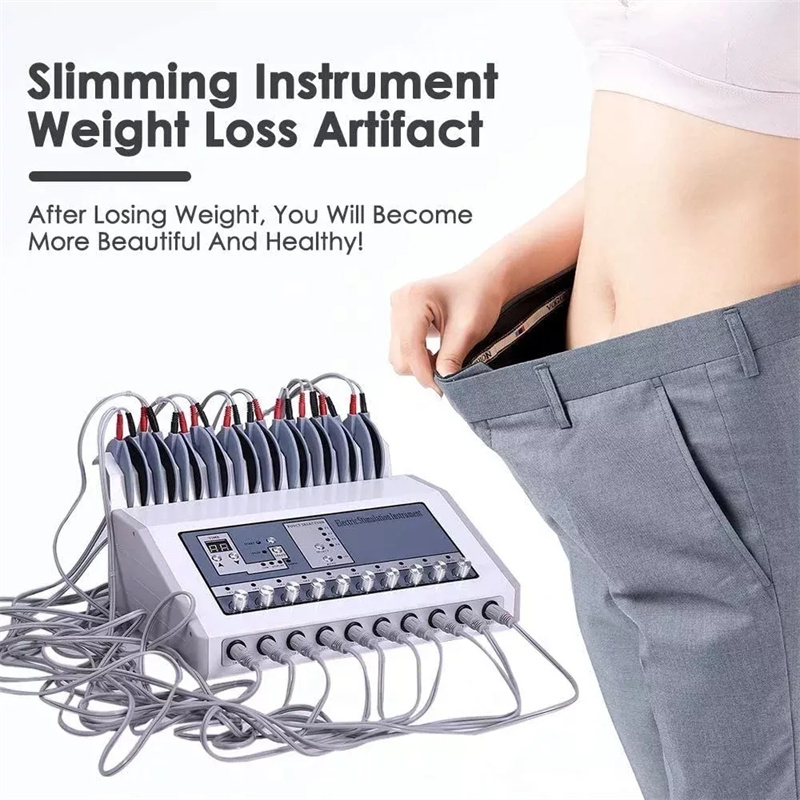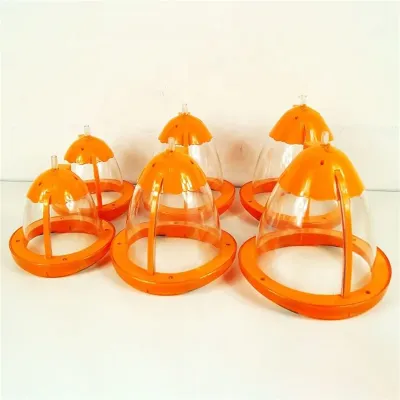
Can EMS muscle stimulator machines help treat nerve injuries?
2025-10-15 15:30
EMS muscle stimulator machines initially gained popularity among fitness enthusiasts for their passive muscle training capabilities. However, a more serious question has also emerged: Can EMS muscle stimulator machines help treat nerve injuries?
To answer this question, we must examine the pathological mechanisms of nerve injury, the working principles of electrical stimulation, and the specific functions of EMS muscle stimulator machines.
This article will provide a professional and systematic analysis of the potential role and significance of EMS muscle stimulator machines in treating nerve injuries.

What is nerve injury?
Before answering whether EMS muscle stimulator machines can help treat nerve injuries, we need to clarify the basic concept of nerve injury.
1. Structure of the Nervous System
The human nervous system is composed of the central nervous system and the peripheral nervous system. The central nervous system includes the brain and spinal cord, while the peripheral nervous system includes sensory and motor nerves distributed throughout the body.
2. Common Types of Nerve Injury
• Peripheral nerve injury: This occurs when nerve fibers are ruptured due to nerve compression, nerve transection, or trauma.
• Central nervous system injury: such as spinal cord injury, traumatic brain injury, or stroke.
• Functional impairment: decreased motor function, sensory loss, muscle atrophy, and even limb paralysis.
3. Difficulties in Repair
After nerve damage, the regeneration of nerve fiber axons is slow, and the ability to conduct nerve signals is weakened. During the repair period, denervated muscles often atrophy rapidly due to lack of exercise, exacerbating functional loss.
This raises a key question: Is there a way to maintain or promote muscle activity while nerves repair? This is precisely why electrical stimulation technology has entered the realm of rehabilitation medicine.

What is an EMS muscle stimulator machine?
An EMS muscle stimulator is a device that applies low-frequency electrical current to nerve or muscle tissue. It primarily transmits electrical pulses through surface electrodes to nerve endings or muscle fibers beneath the skin, mimicking signals sent by the brain and inducing muscle contraction.
Its core goals are:
• Maintaining or enhancing muscle tone to prevent disuse atrophy;
• Promoting blood circulation and improving the local metabolic environment;
• Helping to restore neuromuscular function and, to a certain extent, assisting in the recovery of motor control.
Unlike traditional exercise training, EMS muscle stimulator machines use electrical current to directly stimulate muscle contraction. This can provide additional support when nerves are damaged or active contraction capacity is reduced, which is also the basis for its important application in rehabilitation medicine.
What are the categories of electrical stimulation in neurorehabilitation?
As a physical therapy method, electrical stimulation utilizes applied electrical current to nerve or muscle tissue to induce physiological responses. Based on its mechanism of action and purpose, electrical stimulation can be divided into the following categories:
1. Neuromuscular electrical stimulation (NMES)
Directly stimulates motor nerves with electrical current, inducing muscle contraction. It is used to prevent disuse atrophy and promote functional recovery of the neuromuscular junction.
2. Transcutaneous electrical stimulation (TENS)
It is primarily used to relieve pain by stimulating sensory nerve fibers, interfering with the transmission of pain signals, and achieving analgesic effects.
3. Functional Electrical Stimulation (FES)
Combined with actual motor functions, such as helping paralyzed patients walk or move their hands, electrical stimulation induces sequential muscle contractions.
Mechanistically, electrical stimulation not only maintains muscle activity but also promotes nerve regeneration. Clinical studies have shown that electrical stimulation can enhance axonal growth during nerve repair, accelerating the recovery of sensory and motor function. This mechanism lays the foundation for exploring the relationship between EMS muscle stimulator machines and nerve injury rehabilitation.

The Mechanism of Action of EMS Muscle Stimulator Machines in Nerve Injury Treatment
So, can EMS muscle stimulator machines truly help treat nerve injuries? The answer requires an understanding of neurophysiological mechanisms.
1. Promotes Nerve Conduction Recovery
During the recovery process of nerve injury, electrical stimulation can enhance the excitability of nerve endings and promote the retransmission of nerve impulses. Through repetitive stimulation, EMS muscle stimulator machines may help rebuild the connection between damaged nerves and muscles.
2. Prevents Muscle Atrophy
Muscle atrophy caused by disuse due to nerve injury can seriously hinder functional recovery. The EMS muscle stimulator machine can induce passive contraction, thereby delaying muscle atrophy and providing a better physiological environment for nerve regeneration.
3. Promotes Axonal Regeneration
Research has shown that electrical stimulation can accelerate axonal growth and enhance synaptic formation. This means that with the EMS muscle stimulator machine, nerve fibers may re-innervate the target muscle more quickly.
4. Improves Sensory and Motor Function
Under certain parameters, the EMS muscle stimulator machine is effective not only on motor nerves but also indirectly on sensory nerves, thereby helping to restore dual function.
Thus, it can be seen that the EMS muscle stimulator machine is not a tool for direct nerve repair, but it can indirectly aid in nerve injury recovery by maintaining muscle function and promoting neuromuscular interaction.
EMS muscle stimulator machine: Who is it suitable for?
In nerve injury rehabilitation, the EMS muscle stimulator machine is primarily suitable for the following groups:
• Patients with mild to moderate peripheral nerve injury: It can help maintain muscle tone and reduce atrophy.
• Patients with movement disorders caused by central nervous system damage: For example, patients with hemiplegia: It can stimulate residual neural pathways and enhance muscle response.
• Postoperative rehabilitation: After surgical nerve repair, EMS is used to accelerate functional recovery.
It's important to note that the EMS muscle stimulator machine cannot directly "cure" nerve damage. Its role is more to assist in rehabilitation, helping maintain muscle health and creating favorable conditions for nerve function recovery.
EMS muscle stimulator machine: Application logic in nerve injury rehabilitation
The question of "Can the EMS muscle stimulator machine help treat nerve damage?" can be analyzed from the following logical levels:
• Pathological logic: Nerve damage → interrupted nerve conduction → loss of muscle innervation → muscle atrophy.
• Intervention logic: EMS muscle stimulator machine → passive muscle contraction → delayed atrophy → buying time for nerve regeneration.
• Repair logic: Electrical stimulation → promotes axonal growth and strengthens synaptic connections → nerve function recovery.
In other words, the role of the EMS muscle stimulator machine in nerve injury rehabilitation is not to directly repair nerves, but to create conditions for repair through a series of indirect pathways.

Precautions for Using an EMS Muscle Stimulator Machine
1. Parameter Selection
• Frequency: Generally between 20-100 Hz, selected based on the target tissue.
• Intensity: Should be tolerated by the patient and sufficient to induce muscle contraction.
• Duration: 20-30 minutes per session, 3-5 times per week.
2. Contraindications
• Patients with pacemakers
• Patients with epilepsy
• Patients with severe skin lesions
3. Operating Instructions
• The electrodes must adhere tightly to the skin to avoid uneven current flow and discomfort. Operation should be performed under the guidance of a qualified professional.
EMS Muscle Stimulator Machine: Advantages and Limitations
Advantages of the EMS Muscle Stimulator Machine:
• Non-invasive: No surgical procedure required, safe to operate.
• Highly supportive: Suitable for patients in the early stages of rehabilitation, especially when active movement is limited.
• Promotes dual recovery: Maintains muscle strength while indirectly promoting nerve repair.
Limitations of the EMS muscle stimulator machine:
• It cannot replace nerve repair: It primarily acts on the muscle level and cannot directly repair damaged nerves.
• Effectiveness depends on individual differences: Different patients have different sensitivities to electrical stimulation, resulting in varying results.
• Long-term rehabilitation training is required: EMS alone is unlikely to achieve full recovery and must be combined with physical therapy and exercise training.
Therefore, in the treatment of nerve injuries, the EMS muscle stimulator machine should be considered a valuable auxiliary rehabilitation tool, not the sole solution.
"Can an EMS muscle stimulator machine help treat nerve injuries?"
The answer is: It can play an auxiliary role, but it cannot be used as the sole primary treatment.
Specifically, the EMS muscle stimulator machine can:
1. Prevent and delay muscle atrophy after nerve injury;
2. Improve the functional connection between nerves and muscles;
3. Enhance local metabolism and blood circulation, creating an environment conducive to repair;
4. Assist in enhancing motor control and accelerating the recovery process.
Therefore, the role of the EMS muscle stimulator machine in nerve injury rehabilitation should be understood as one component of a rehabilitation system. It provides valuable support for muscle maintenance and nerve repair, but it cannot solely address the full potential of nerve injury treatment.
Can your products be customized for local regulations or plug types?
Yes. We understand that different countries require different standards, including plug types, voltage settings, and certification labels. KuoHai offers full customization to meet local market needs. When you purchase from us, we ensure each unit is tailored for your region, from power adapters to language manuals. We’re a China-based supplier that understands international trade and delivers beyond expectations.
Get the latest price? We'll respond as soon as possible(within 12 hours)







